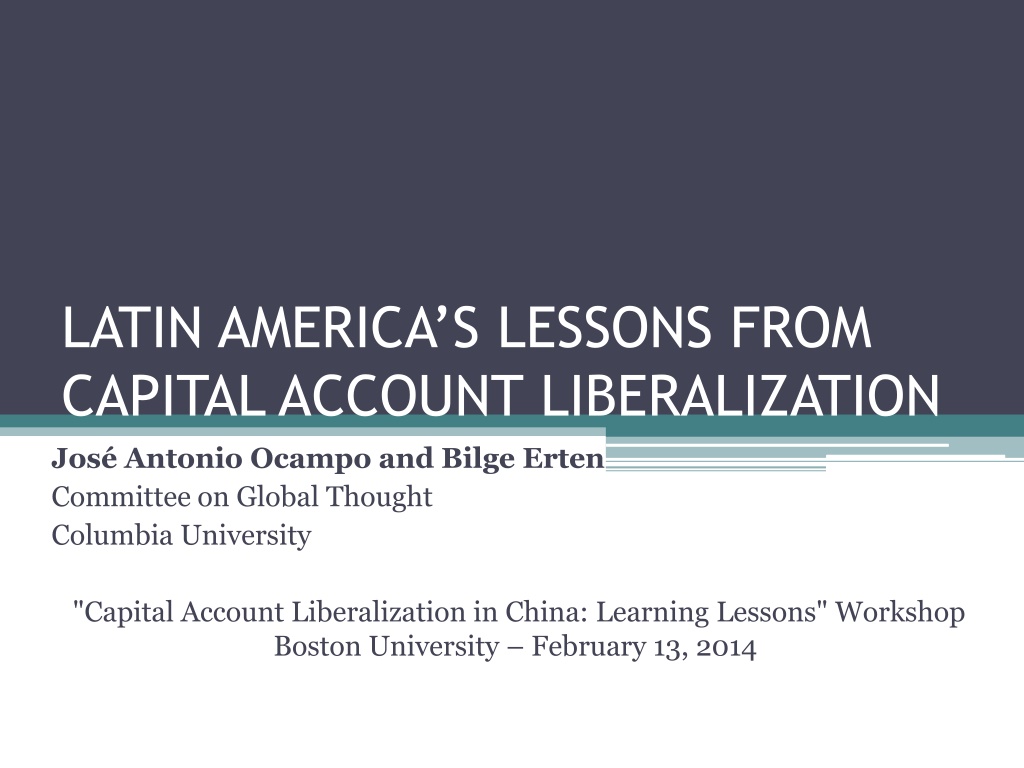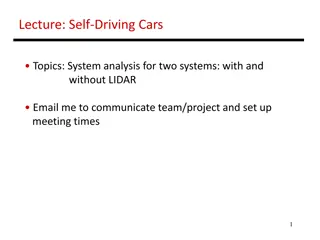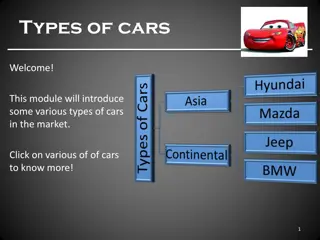Lessons on Capital Account Liberalization in Latin America: A Historical Overview
Explore the evolution of capital account liberalization in Latin America from 1950 to 2013, highlighting key events such as the Latin American debt crisis, post-crisis capital flows, and regulatory phases. The comparison with emerging market economies sheds light on the region's capital account restrictiveness. Insights from past cycles provide valuable lessons for the future management of capital flows in Latin America.
Download Presentation

Please find below an Image/Link to download the presentation.
The content on the website is provided AS IS for your information and personal use only. It may not be sold, licensed, or shared on other websites without obtaining consent from the author. Download presentation by click this link. If you encounter any issues during the download, it is possible that the publisher has removed the file from their server.
E N D
Presentation Transcript
LATIN AMERICAS LESSONS FROM CAPITAL ACCOUNT LIBERALIZATION Jos Antonio Ocampo and Bilge Erten Committee on Global Thought Columbia University "Capital Account Liberalization in China: Learning Lessons" Workshop Boston University February 13, 2014
Medium-term cycles of capital flows to emerging markets: 1975-81--Recycling of petrodollars, via bank loans, to oil-importing EMs 1982, Aug.-- Mexico unable to service its debt on schedule, defaults => Start of the Latin American debt crisis, 1982-89 2. 1. 1990-97 -- New capital flows to EMEs following 1989 Brady Plan 1994, Dec. -- Mexican peso crisis 1997,July-- Thailand forced to devalue and seek IMF assistance => Start of East Asia crisis 1998, Aug. -- Russia defaults on much of its debt => Contagion to Brazil. 2001-02 -- Turkey and Argentina currency & debt crises 3. 2003-07 -- New capital flows into developing countries 2008, Sep. Lehman Brothers collapse => Beginning of North AtlanticFinancialCrisis 4. 2009-13 -- Post-crisis surge in capital flows to emerging markets, 2013, May -- May 2013 U.S. Fed tapering began the contraction phase
3 Net resource transfers to Latin America Figure 1: Net resource transfer, 1950-2012 (% of GDP at current prices) 4.0% 2.0% 0.0% 1950 1952 1954 1956 1958 1960 1962 1964 1966 1968 1970 1972 1974 1976 1978 1980 1982 1984 1986 1988 1990 1992 1994 1996 1998 2000 2002 2004 2006 2008 2010 2012 -2.0% -4.0% -6.0% via financial flows via FDI Total -8.0% Source: Authors estimates based on ECLAC data
4 Major phases of liberalization and regulation 1950-75 -- Extensive FX and capital account regulations in all LA Exceptions: Mexico and Venezuela 1. 1975-81 -- Capital account liberalization in Argentina, Chile and Peru, but Brazil and Colombia remain relatively closed; Domestic liberalization in Argentina and Chile 1982-89 -- Closing of the capital account during LA debt crisis 2. 1990-98 -- Broad-based capital account liberalization in LA, including Brazil and Colombia, but with new instruments to regulate capital flows: Taxes on capital flows in Brazil, and URRs in Chile and Colombia. Regulations on FX transactions, e.g. restrictions on domestic financial deposits in FX. -- Semi-dollarized systems in Argentina and Peru, hyperinflations of 1989 and 1990; but not in Brazil despite its hyperinflation in early 1990s 3. 2000-06 -- Further liberalization in Brazil, Colombia, Chile (FTA with U.S.), but reversal of liberalization in Venezuela and Argentina 2004-13 -- Peru used differential RRs on deposits in dollars and short-term external borrowing by domestic banks vs. deposits in the domestic currency 2007-08 -- Colombia used URRs before FTA with U.S. 2009-11 -- Brazil used taxes on capital inflows after the North-Atlantic crisis
5 Comparison of capital account restrictiveness of Latin America vs Emerging Market Economies Figure 2: Capital Account Restrictiveness in Latin America and EMEs 2.0 1.5 1.0 0.5 0.0 -0.5 -1.0 1970 1975 1980 1985 1990 1995 2000 2005 2010 LA7 EMEs Source: Negative of Chinn-Ito index of capital account openness.
6 Capital flow regulations in Latin America Figure 3: Capital Flow Regulations in Latin America and EMEs .9 .9 B. Capital Outflow Regulations A. Capital Inflow Regulations .8 .8 .7 .7 .6 .6 .5 .5 .4 .4 .3 .3 .2 .2 .1 .1 1996 1998 2000 2002 2004 2006 2008 2010 1996 1998 2000 2002 2004 2006 2008 2010 LA7 EMEs LA7 EMEs .9 .9 C. FX-related Regulations D. Financial Sector Specific Restrictions .8 .8 .7 .7 .6 .6 .5 .5 .4 .4 .3 .3 .2 .2 .1 .1 1996 1998 2000 2002 2004 2006 2008 2010 1996 1998 2000 2002 2004 2006 2008 2010 LA7 EMEs LA7 EMEs Source: Updated by Erten and Ocampo (2013) with data from Schindler (2009) and Ostry et al. (2012).
7 Lessons from capital account liberalization and regulation Surges in international capital flows generate pressure to adopt pro- cyclical macroeconomic management and to liberalize capital account and financial regulations, with large destabilizing effects: Both the liberalization of the 1970s/early-1980s and that of the 1992-97 ended up in major crises. However, not all booms end up in crises: The critical issues are current account deficits and associated currency appreciation. Reduction of external debts and accumulation of reserves serve as additional buffers against capital flow volatility. The domestic counterpart of the current account deficit is important: the experience of the Southern Cone during the first boom and of a broader group of countries during the second was problematic, since external financing was essentially consumed. Maintaining some capital account regulations to directly manage capital flow volatility is important. Brazil, Chile, Colombia and Peru used some of these tools effectively. But these regulations should be used as a complement, not as a substitute for domestic financial regulations in some cases, their use as a substitute has made crises unavoidable and more severe.
8 Investment as a share of GDP Figure 4: Latin America Investment ratio, 1965-2013 (2000 prices) 26% 25% 24% 23% 22% 21% 20% 19% 18% 17% 16% 15% 1979 2003 1965 1967 1969 1971 1973 1975 1977 1981 1983 1985 1987 1989 1991 1993 1995 1997 1999 2001 2005 2007 2009 2011 2013 Source: Authors estimates based on ECLAC data
9 External debt as a share of GDP Source: Authors estimates based on ECLAC data
10 Current account balance has deteriorated since 2002 when adjusted by terms of trade Source: Authors estimates based on ECLAC data
LATIN AMERICAS LESSONS FROM CAPITAL ACCOUNT LIBERALIZATION Jos Antonio Ocampo and Bilge Erten Committee on Global Thought Columbia University "Capital Account Liberalization in China: Learning Lessons" Workshop Boston University February 13, 2014























